Optimal Font Size for Reading in Print
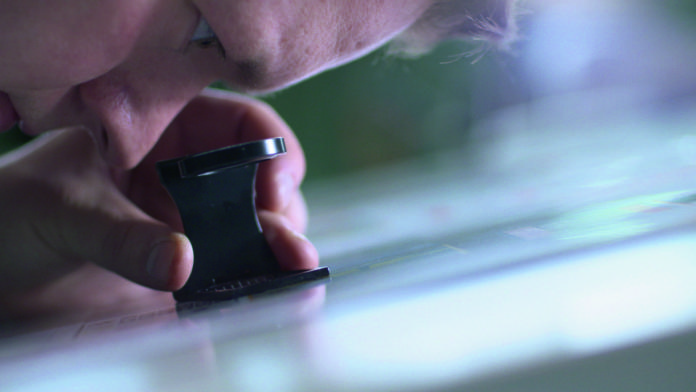
The font size is decisive for both legibility and text impact. But what exactly is the font size? Where is it measured and why are the letters of a Times typeface bigger than those of an English cursive font even though you have entered the same point value?
The web abounds with font size guidelines for students and other target audiences. For instance, some universities still prescribe which typeface (Times New Roman) and betoken size (12 pt) to use for a dissertation which does not necessarily contribute to the legibility of a thesis. Many people are unsure when information technology comes to font sizes. And this is quite understandable given the lack of curtailed and understandable guidelines on this subject. Loftier fourth dimension to shed light on the matter.
Typographic units
When working with font, we don't utilize the metric measurement system but typographic units. And then when talking about font size, it's not metres and millimetres we use simply the smallest typographic unit, the betoken, established in the early days of press which has survived to engagement. Unlike units of measurement were effectually over the years and centuries: The Didot point, a modified version based on the Fournier point, was the standard in the world of typography for a long time. At 0.375 mm, information technology was slightly bigger than today's PostScript or DTP point which measures0.353 mm . So if y'all enter a 10 pt font size in Microsoft Word or Adobe InDesign, you define that your font will accept a size of 3.53 mm. In theory at to the lowest degree.
What is font size?
Let's first define the term 'font size'. Strictly speaking, the term is misleading since we don't define the size of the font when setting the point value in InDesign, Give-and-take or other applications, only rather nosotros specify the body height. In transmission typesetting, the body pinnacle is divers past the tiptop of the lead type or metal sort on which the actual font confront, the printing surface of the type, is moulded. Information technology is surrounded past blank or empty portions of the letterform, the and then-chosen counters.
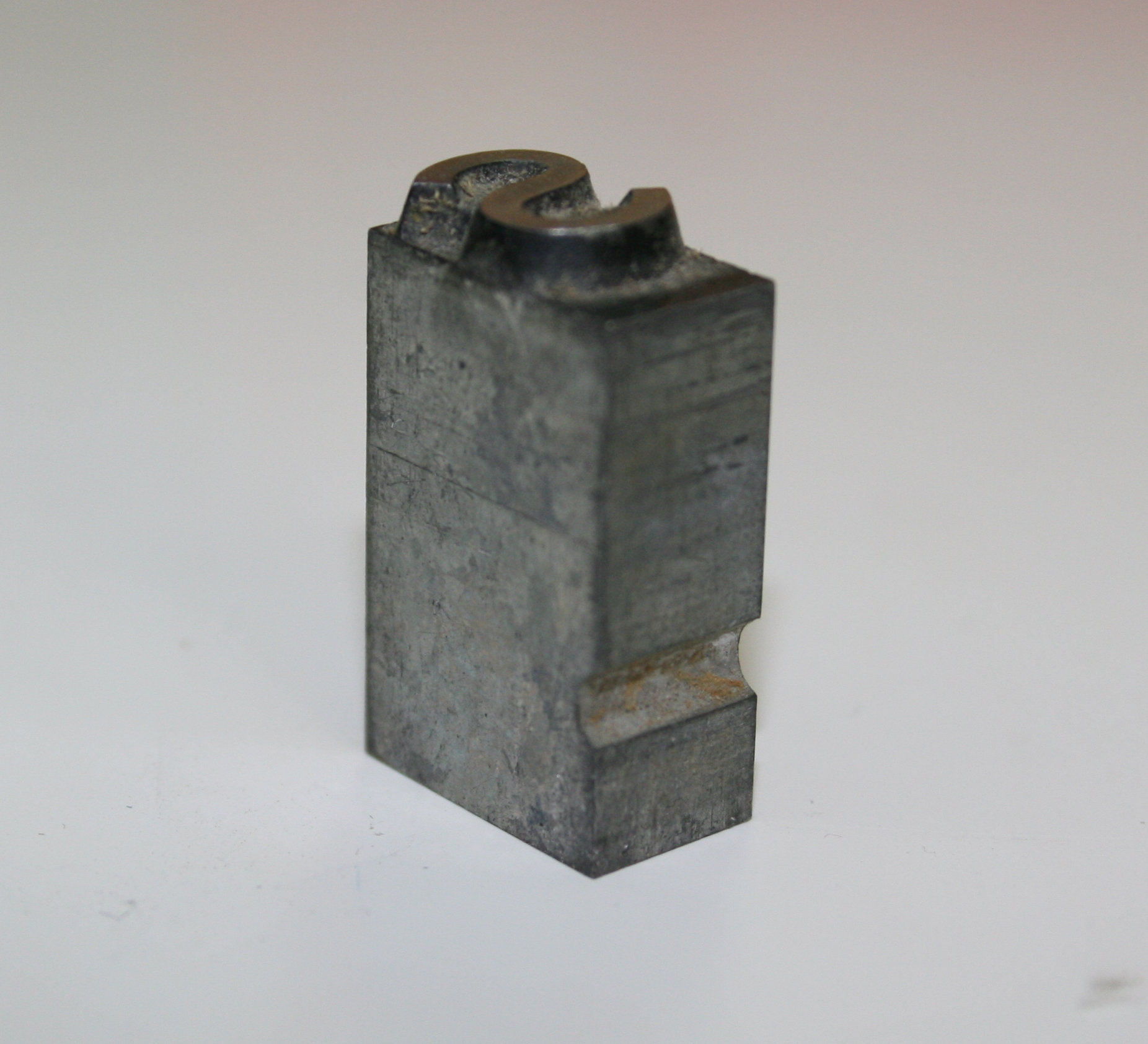
When Gutenberg set up a 12 pt font, it was the metal type and not the printed letter of the alphabet that had a vertical height of 12 points. Hence, the body height is more often than not bigger than the printed glyph.
Fortunately, in our mod times we don't take to behave around type cases anymore. In the historic period of digital type, we no longer work with lead type. Just the body peak is all the same an of import reference measure in font design. After all, when you enter a 12 pt font size in InDesign, you ascertain the superlative of a glyph's bounding box which corresponds to the height of the metal body the type was cast on in the early days.
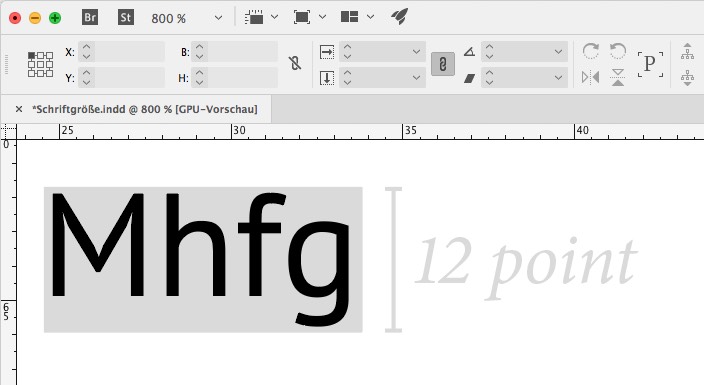
Dissimilar measuring results
Now one could assume that you would simply have to accept away xv percent of counter space, i.e. the blank or empty portions of the letterform, for each font. So when entering 12 pt minus 15 percent, each font would and then have an actually measurable height of 10.ii pt. Just this is not the case equally you take probably noticed: Two different fonts set in the same bespeak size can appear similar in size or await surprisingly dissimilar. Apart from the optical size, which is besides of import, the usage of the body height is decisive for the really measurable final size.
Typeface designers are gratuitous to decide how to use the body elevation to create a residue between printed glyph and not-press space effectually it. Typographers that prefer a more open, airy experience may cut away a lot of the letter body, whereas other fonts brand total use of the available pattern space by reaching the boundaries of a glyph'due south bounding box and beyond.
Depending on how the bachelor space is used, the actually measurable font will exist bigger or smaller.
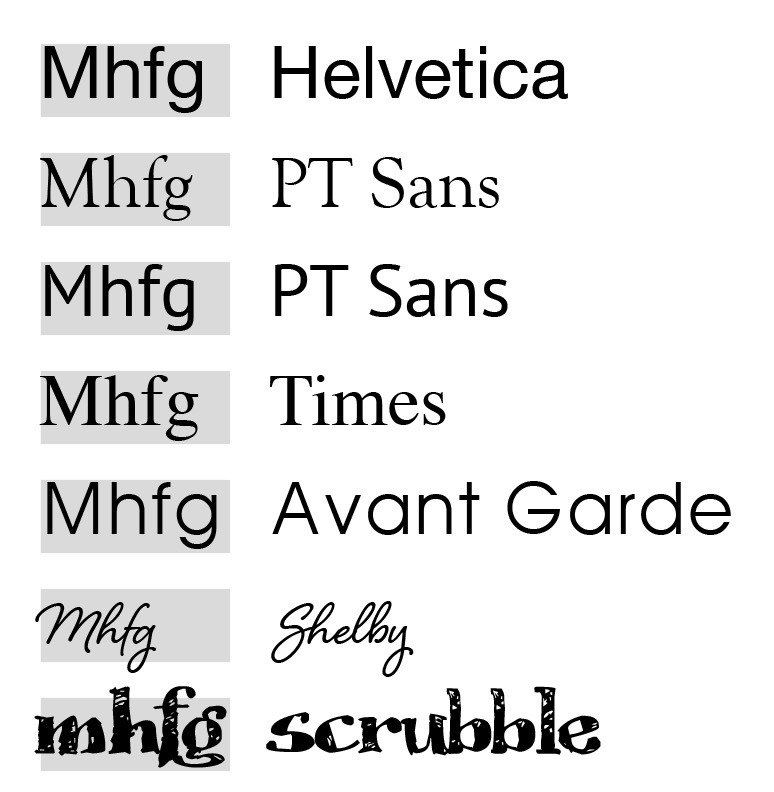
Different optical advent
When because sizes, we have to call up the outcome a font has. There are fonts which are identical both in terms of body height (fonts fix in 12 pt) and actually measurable letter size (same betoken size of the uppercase messages measured with the typometer). Withal, they appear dissimilar in size and their legibility varies, particularly in small signal sizes. Why is that?
A letter has dissimilar anatomical features. The "p", for instance, extends below the baseline, the "a" stays in the centre, the "b" rises above the meanline, the "Eastward" is located in the middle and at the top, the "O" ascends still a bit further and accented capitals win the summit competition. This is illustrated in the graphic below:
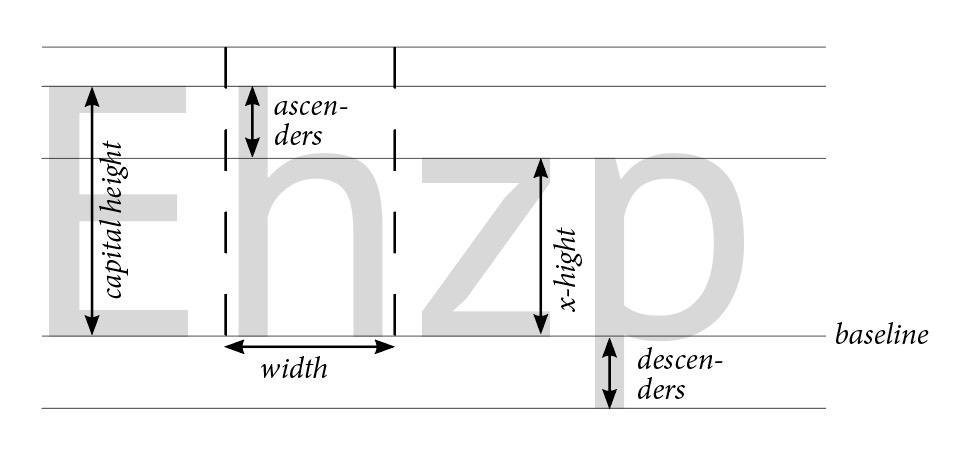
Also shapes, line width and letter width, it is mainly the10-summit that is decisive for the optical size. The ten-height is the height of lowercase letters in a typeface, such as "k", "a" or "z". This summit is unlike in relation to the cap top, that is of the letters "M", "A", or "Z". Frequently the letters have a size ratio according to the Gilded Ratio at a factor of 1.vi which means that the "M" is ane.6 times larger than the "grand".
But as always these proportions are but an boilerplate. Many fonts employ other proportions and these work just besides. And although you lot have to exist conscientious when making generalised statements about font size, it can be said that fonts with large x-heights compared to the cap peak tend to appear larger than fonts where the x-superlative is relatively small.
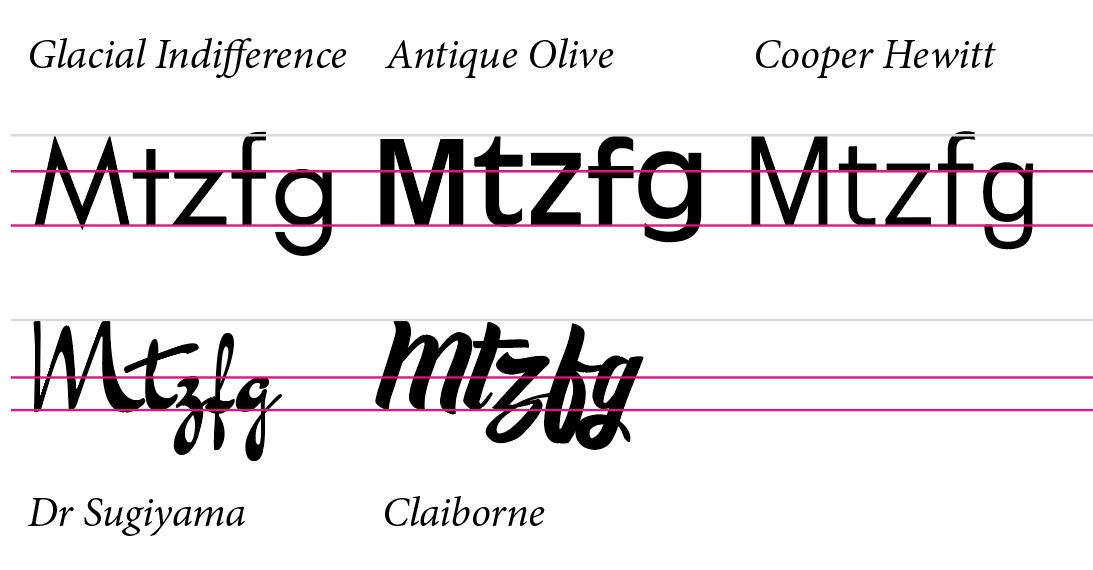
Remember: Not all 12 pt fonts are made the same. Depending on the font, the differences can be considerable: A 12 pt font can appear small like an eight pt font or large like a 16 pt font.
Measuring font size
So what to exercise if you have a template and need to find out which font sizes are used, for case, to lay out a new flyer based on an old template?
There are different approaches to achieve this, but unfortunately no generally applicable standards. Using a typometer, which is a ruler divided in typographic points, nosotros tin measure printed fonts. But there are dissimilar means to measure, different typometers and ultimately different betoken sizes here as well.
Hp acme
The hp top is a standard measurement; it measures the height from the upper edge of the alphabetic character "h", "b", "d" or "l" to the lower edge of "p" or "q". For this purpose, near typometers characteristic printed rectangles. All you have to do is find the rectangle which exactly fits the letters "h" and "p" and you know the font size. If but there wasn't the affair of different trunk height usage described above…
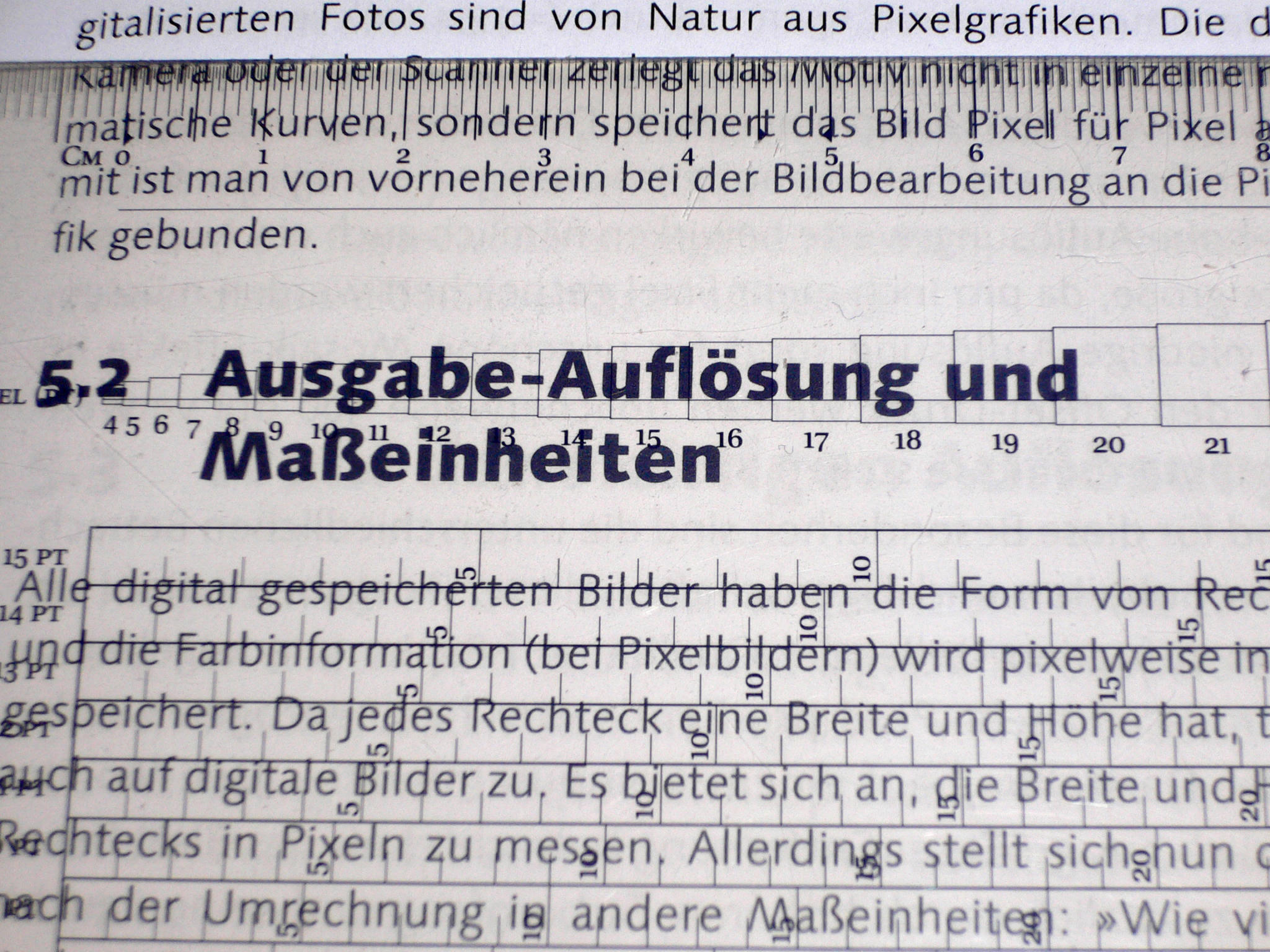
The cap peak
Alternatively, some designers work with the cap height which measures just the elevation of a upper-case letter letter without bowls, for case that of an "H" or "M". But they, besides, are difficult to measure, especially in case of cursive and handwritten fonts. Of course, the cap tiptop is not the aforementioned as the signal size you enter in InDesign and other applications. Here yous have to specify the body height. And then y'all tin either draw from experience or you know where to wait to calculate the font size or body height from the cap height.
Which font size for which purpose?
Given the situation explained higher up, information technology is hardly possible to give reliable font size recommendations. An easily legible font size for longer body text every bit used in magazines and books usually ranges between eight and 12 points. To narrow down farther, you have to know which font is used to make a reliable statement. The same applies to business concern cards or letterheads for which a font size between 8 and 12 pt is equally well suited. Captions, copyright information, footnotes and similar annotations may yet be legible in 7 pt. Just this strongly depends on the font used and on other details, such equally the line length, the amount of text or the background. 6 pt fonts usually crave the reader to wear good spectacles or are used for the fine print in contracts which nobody wants to read anyway.
Determination: We know that we know nothing.
There is no universally valid ground for body pinnacle usage and/or the font size this ultimately delivers. Font sizes are relative and a trained eye and feel are the most helpful tools to select the right size in addition to some basic values.
Source: https://www.onlineprinters.co.uk/magazine/font-sizes/
0 Response to "Optimal Font Size for Reading in Print"
ارسال یک نظر